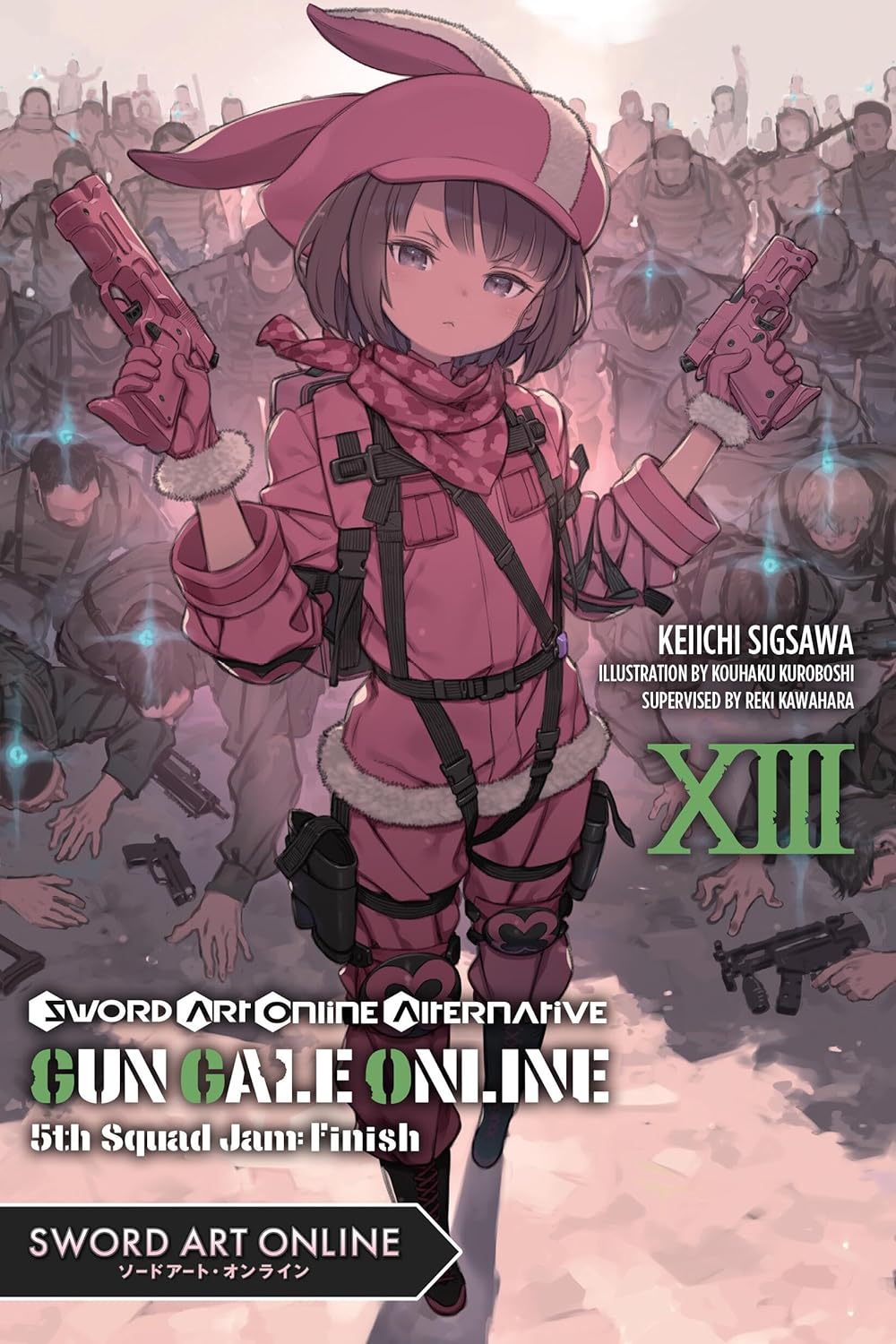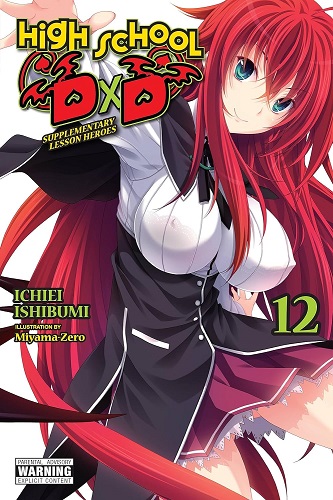By Keiichi Sigsawa and Kouhaku Kuroboshi, based on the series created by Reki Kawahara. Released in Japan by Dengeki Bunko. Released in North America by Yen On. Translated by Stephen Paul.
This is the 13th volume of the SAO:GGO series, and I’m pretty sure it has probably gone on longer than Keiichi Sigsawa originally planned it for. The nature of the series, after all, is basically “death game” only for once it really IS a game so we don’t need to worry about death. Which actually helps with the longevity. The cast here is large, and except for our main group we may not remember everyone all that well, but Llenn is not the only one who’s gotten famous, she’s just the poster child. We’ve also grown to see David’s seriousness as he tries his hardest to finally achieve something in a Squad Jam and always seems to not quite get there. There’s Vera, who took the series’ funniest running gag (the machine gun bros) and made them into the most dangerous team out there, taking out more of our main characters than anyone. And there’s SHINC, of course, who still don’t get to face off against Llenn. Alas.
The last volume ended with the shock of Shirley sniping Pitohui and removing her from the game. But there’s no time to dwell on that, as Llenn still has a bounty on her head and everyone wants the money associated with it. M, Fukaziroh, Boss, and Anna are trying to protect her while also getting to the center of the castle that is their final battlefield… because they’ve been told that the rest of the castle except that battlefield will soon ALSO drop off and doom everyone still in it to death by extreme falling. Clarence is holed up in a tower with good defense, but can’t really move. And Shirley has had her fondest wish granted, but is finding that “Sniper” is not really a good choice for the REST of this game. And wait, are those… ghosts?
Usually there’s one part of each book in this series that I am surprised, and here it was Pitohui returning as a ghost. I thought for sure she’d be back sooner, and torment Shirley, but no – the ghosts don’t show up till the climax, and she and Shirley never interact. Instead, the series does one of the things it does best, with is provide some ridiculous death, badass deaths, and badass AND ridiculous deaths in one book. The climax of the book is hilarious, exciting, and thrilling – I was not actually sure if Llenn really would get killed off by someone else or not till the last few pages, and everything about the rivalry between Fukaziroh and Anna – and, let’s face it, Fukaziroh in general – makes me giggle. There is even a smidge of depth here, as Karen/Llenn starts to realize, and later is told point blank by Fukaziroh, that she’s not the same shy wallflower she was at the start of the series – the game has been good for her in real life as well. It’s therapeutic.
We’ve caught up with Japan, so I’m not sure when we’ll get another of these. It’s a satisfying finish for fans of the series, though.



